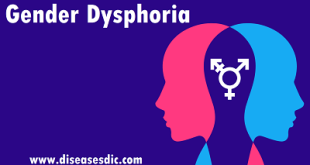Definition
Giardiasis (giardia) is an intestinal infection marked by abdominal cramps, bloating, nausea, and bouts of watery diarrhea. Giardia infection is caused by Giardia lamblia a microscopic parasite that is found worldwide, especially in areas with poor sanitation and unsafe water. Infection with giardiasis is one of the most common causes of waterborne disease in the USA. The parasites are found in streams and lakes in the backcountry but also in municipal water supplies, pools, whirlpool spas, and wells. Infection with giardia may be transmitted through food and contact person to person.
Infections of the Giardia typically clear up within weeks. But you may have bowel problems long after the parasites have gone away. Several drugs are generally effective against parasites of giardia but not all respond to them. Prevention is the best defense for you.
Life cycle
The parasite has a direct life cycle. It lives in the lower small intestine of the cat in its trophozoite form, adherent to the intestinal wall. It replicates by binary fission to produce the encysted form, which is passed in the feces in addition to the trophozoites.
Life cycle of Giardia lamblia
Spread of Giardiasis
Giardiasis can be spread by:
- Swallowing Giardia picked up from surfaces (such as bathroom handles, changing tables, diaper pails, or toys) that contain feces (poop) from an infected person or animal
- Drinking water or using ice made from water sources where Giardia may live (for example, untreated or improperly treated water from lakes, streams, or wells)
- Swallowing water while swimming or playing in the water where Giardia may live, especially in lakes, rivers, springs, ponds, and streams
- Eating uncooked food that contains Giardia organisms
- Having contact with someone who is ill with giardiasis
- Traveling to countries where giardiasis is common
Anything that comes into contact with feces (poop) from infected humans or animals can become contaminated with the Giardia parasite. People become infected when they swallow the parasite. It is not possible to become infected through contact with blood.
Epidemiology
Giardia has a worldwide distribution, occurring in both temperate and tropical regions. It continues to be the most frequently identified human protozoal enteropathogen. Prevalence rates vary from 4-42%. In the industrialized world, overall prevalence rates are 2-5%. In the developing world, G intestinalis infects infants early in life and is a major cause of epidemic childhood diarrhea. Prevalence rates of 15-20% in children younger than 10 years are common.
Giardia is the most common gut parasite in the United Kingdom, and infection rates are especially high in Eastern Europe. Prevalence rates of 0.94-4.66% and 2.41-10.99% have been reported in Italy.
Giardiasis risk factors
Giardiasis is more common in places with poor water or sewage treatment. Asia and South America have the highest infection rates. Risk is also higher for people who:
- Live in crowded places with poor sanitation
- Drink untreated water
- Have low stomach acid
- Take stomach acid reducers
- Have oral to anal contact during sex
- Have a weakened immune system
- Are a daycare worker or work in a group setting
- Swim in water sources that may be contaminated
Causes of Giardiasis
The parasite that causes giardiasis lives in 2 stages:
- Trophozoites (the active form inside the body)
- Cysts (the resting stage that enables the parasite to survive outside the body)
The infection starts when the cysts are taken in through contaminated food or water. Stomach acid activates the cysts and the trophozoites are released. They attach to the lining of the small intestine and reproduce. Cysts form in the lower intestines. They are then passed in the feces.
The parasite may be passed from person-to-person by contact with infected feces, or through consuming contaminated food or water.
Symptoms
More than two-thirds of people who are infected may have no signs or symptoms of illness, even though the parasite is living in their intestines. When the parasite does cause symptoms, the illness usually begins with severe watery diarrhea, without blood or mucus. Giardiasis affects the body’s ability to absorb fats from the diet, so diarrhea contains unabsorbed fats. That means that the diarrhea floats is shiny, and smells very bad.
Other symptoms include:
- Abdominal cramps
- Large amounts of intestinal gas
- An enlarged belly from the gas
- Loss of appetite
- Nausea and vomiting
- Sometimes a low-grade fever
These symptoms may last for 5 to 7 days or longer. If they last longer, a child may lose weight or show other signs of poor nutrition.
Sometimes, after acute (or short-term) symptoms of giardiasis pass, the disease begins a chronic (or more prolonged) phase. Symptoms of chronic giardiasis include:
- Periods of intestinal gas
- Abdominal pain in the area above the navel (belly button)
- Poorly formed, “mushy” bowel movements (poop)
Complications
These complications can occur:
- Dehydration (loss of water and other fluids in the body)
- Malabsorption (inadequate absorption of nutrients from the intestinal tract)
- Weight loss
Diagnosis and test
Giardia infection can be challenging to diagnose; Health care providers rely on a stool analysis to confirm the presence of the parasite.
Stool Analysis
Checking your stool for the parasite is the primary way doctors diagnose a Giardia infection. The test can be done in one of two ways, both of which will require you to provide a stool sample.
Stool Ova and Parasites Exam: For this exam, a small amount of stool is smeared on a slide. The sample is examined with a microscope for signs of cysts or adult parasites.
Antigen Test: An antigen test doesn’t look for the whole parasite—rather, it looks for a protein made by Giardia when it’s in the human body.11 These proteins are what the immune system responds to when it’s trying to defend itself from the infection.
Giardia parasites can be hard to spot and don’t always show up in a stool sample from someone who is infected. If your doctor suspects you have giardiasis, they might order both tests at the same time. Or, if the first test comes back negative, they might have you give additional stool samples especially if your symptoms match up with giardiasis.
String Test
If stool tests don’t confirm the diagnosis but your doctor still suspects giardiasis, they might use another tool called the string test or Entero-test.
- For the test, you swallow a string with a weighted gelatin capsule attached to one end. As the string moves through the digestive tract, it collects samples from the upper part of the small intestine. About four hours later, your doctor removes the string and examins the fluids it gathered under a microscope for the parasite.
- The string test is not typically the first test your doctor will use if they think you have giardiasis. Some researchers believe the string test is better at spotting Giardia than stool tests, but other studies claim it isn’t effective.
- Since the research has been inconsistent and the test can be uncomfortable for patients, it’s typically only used when stool tests are negative but giardiasis is highly suspected.
Treatment and medications
Children and adults who have giardia infection without symptoms usually don’t need treatment unless they’re likely to spread the parasites. Many people who do have problems often get better on their own in a few weeks.
When signs and symptoms are severe or the infection persists, doctors usually treat giardiasis with medications such as:
Metronidazole (Flagyl): Metronidazole is the most commonly used antibiotic for giardia infection. Side effects may include nausea and a metallic taste in the mouth. Don’t drink alcohol while taking this medication.
Tinidazole (Tindamax): Tinidazole works as well as metronidazole and has many of the same side effects, but it can be given in a single dose.
Nitazoxanide (Alinia): Because it comes in a liquid form, nitazoxanide may be easier for children to swallow. Side effects may include nausea, flatulence, yellow eyes, and brightly colored yellow urine.
There are no consistently recommended medications for giardiasis in pregnancy because of the potential for adverse drug effects on the baby. If your symptoms are mild, your doctor may recommend delaying treatment until after the first trimester. If treatment is necessary, discuss the best available treatment option with your doctor.
Prevention of Giardiasis
To help prevent the spread of giardia:
- Keep infected people from going to childcare, pre-school, school or work until they have not had any diarrhoea for at least 24 hours
- Do not use swimming pools for at least 2 weeks after diarrhoea has completely stopped
- Wash hands properly, especially after going to the toilet and before handling food
- Do not share linen, towels or eating utensils with others while there are symptoms
- Boil any water before drinking if you suspect it may be contaminated
- Treating infected people reduces the spread of the parasite.
 Diseases Treatments Dictionary This is complete solution to read all diseases treatments Which covers Prevention, Causes, Symptoms, Medical Terms, Drugs, Prescription, Natural Remedies with cures and Treatments. Most of the common diseases were listed in names, split with categories.
Diseases Treatments Dictionary This is complete solution to read all diseases treatments Which covers Prevention, Causes, Symptoms, Medical Terms, Drugs, Prescription, Natural Remedies with cures and Treatments. Most of the common diseases were listed in names, split with categories.








I do have stomach cramp anytime am having sex and it makes me sexually weak to continue.
Please consult a doctor to get rid of this problem.
How to save the notes on my phone?